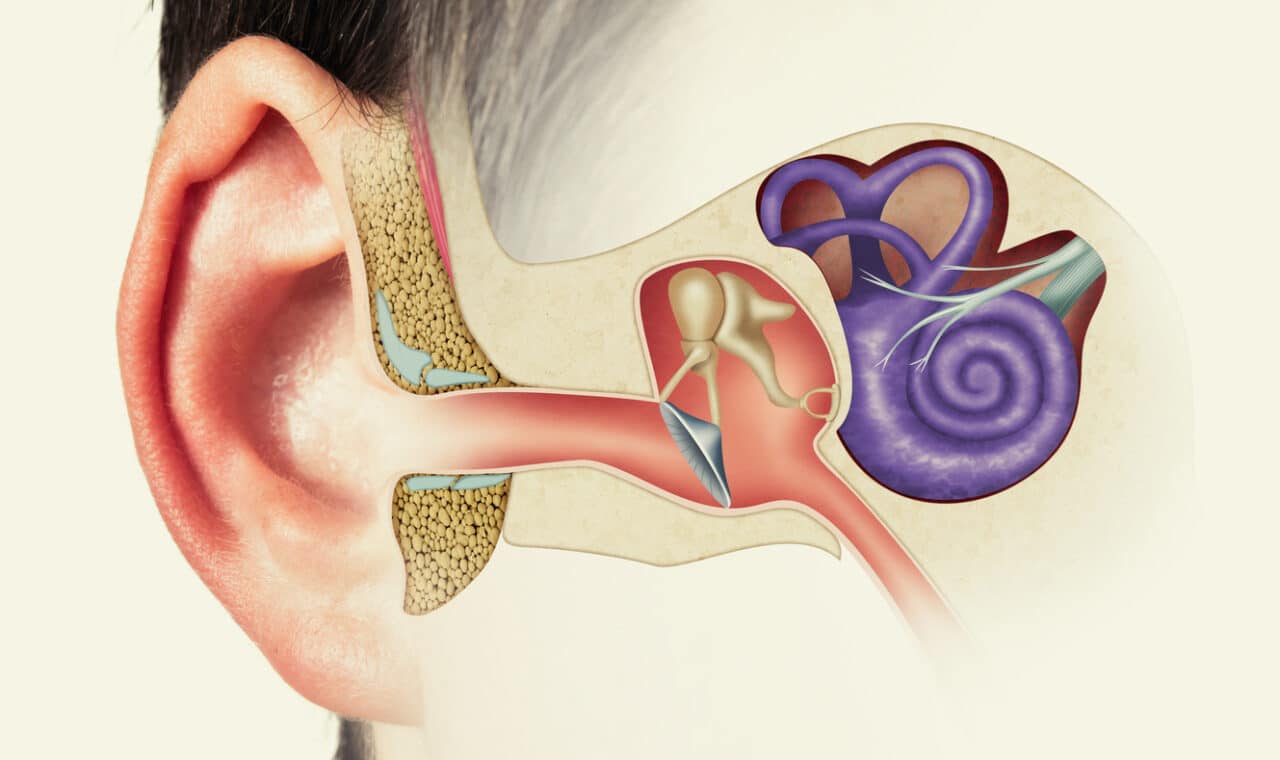The auditory system is a complex structure working tirelessly to bring sounds like chirping birds or steaming milk at Southern Fuel Coffee to your brain. When one part of the system breaks down, hearing loss can arise. Let’s look at the inner ear’s anatomy and how damage inside it can lead to hearing loss.
The Two Systems of the Inner Ear

Your ear is made up of the outer ear, middle ear and inner ear. The inner ear consists of the auditory and vestibular systems.
- The auditory system. The cochlea in the inner ear is responsible for transmitting sound. This spiral-shaped, fluid-filled structure is lined with around 18,000 tiny hair cells. As sound enters the cochlea from the middle ear, the fluid inside moves, stimulating the hair cells. This movement generates an electrical signal sent to the auditory nerve, which carries it to the brain’s temporal lobe for sound perception.
- The vestibular system. The vestibular system comprises semi-circular canals and the vestibule containing the utricle and saccule organs. The semi-circular canals are coiled, hair-lined tubes in the inner ear responsible for rotary movement. The hair cells in these canals detect changes in movement and orientation. The utricle and saccule are similar fluid-filled organs responsible for motion occurring in a straight line (up/down or forward/backward).
How Does Inner Ear Hearing Loss Occur?
Sensorineural hearing loss (SNHL), the most common type of permanent hearing loss, originates in the inner ear. It can result from aging, exposure to loud noises, genetics, illness or ototoxic medications (medications damaging to the auditory system). SNHL may develop suddenly due to extreme noise exposure or gradually with age.
While most SNHL cases are permanent, tools like hearing aids and cochlear implants can amplify external sounds, helping to manage the condition.
Can You Prevent Inner Ear Hearing Loss?
SNHL causes are not always preventable. For example, genetic and age-related causes can’t be held back. However, by practicing good hearing care, you can help stave off preventable causes like loud noise or certain illnesses by following a couple of tips:
- Avoid exposure to loud noise over 85 decibels.
- Vaccinate yourself and your children against illnesses known to cause hearing loss, like mumps, measles, meningitis and rubella.
- Choose medication carefully. There are more than 200 known ototoxic medications. While you may be able to substitute some of these, taking the medication is unavoidable in many cases. For example, when it is used to treat cancer or extremely high blood pressure. If you take ototoxic medications, schedule regular appointments with your audiologist to track potential hearing loss.
If you’re having trouble understanding those around you, contact Elevate Audiology to schedule an appointment with one of our hearing specialists for a treatment plan.
